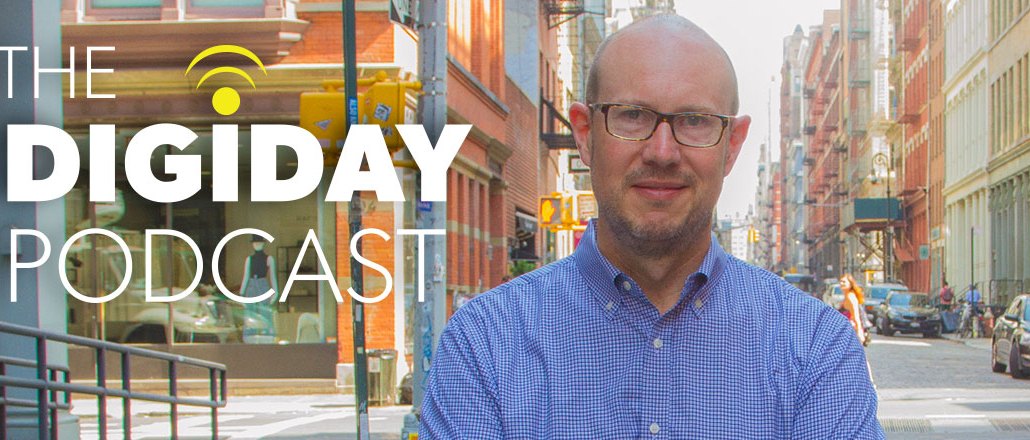Panoply’s chief content officer Andy Bowers: ‘Podcasting is survival of the fittest’

Subscribe: iTunes | Stitcher | RSS
Podcasts are having a moment. But with Apple providing limited data on their audiences, big brands are reluctant to throw a lot of money at the medium.
Radio and podcast veteran Andy Bowers is the chief content officer at Panoply, Slate’s 1-year-old podcast network. When he started at Slate, the publisher’s podcasting operations amounted to him reading Slate articles into a mic. Today, Panoply is a Slate platform that partners with publishers including The Wall Street Journal, Vanity Fair and Sports Illustrated.
“Our choice was: We could have a whole bunch of new competitors, or we could offer them some of our learning, technology, production skills and try to build a network of similarly minded smart programming,” said the NPR vet.
Bowers joined Digiday editor-in-chief Brian Morrissey on this week’s Digiday Podcast to discuss the main challenges in podcasting, what people get wrong about it and where its heading. Edited highlights below.
The need for compelling content
When Bowers first shifted from radio to podcasting, one of the mistakes he made was trying to replicate radio, which didn’t work because people listen to podcasts in a completely different way than to radio. People also want different kinds of content because podcasting is more intimate, and they will listen to it by themselves in a routine specific to them, he said.
Ad position: web_incontent_pos1
“Radio is a lean-back medium where you choose your stations and just listen to whatever happens to be on, but podcasting is survival of the fittest,” he said. And as podcasting increases in popularity, the competition gets tougher. “You have to be so compelling people are willing to choose yours over others.”
Getting around the metrics problem and attracting advertisers
The only data from Apple that podcast producers have access to is streaming numbers, an improvement on download numbers because it shows some level of audience engagement, Bowers said. Apple won’t share audience demographics, listening time and listening behavior, though, citing privacy concerns. This is a major factor holding back many brands from podcast advertising. That’s why podcasts have been dominated by direct-response advertisers, which use promotional codes to figure out which shows are driving audience engagement. Bowers said big brands don’t necessarily think podcasting doesn’t work but need to show which audience they’re reaching.
Cars are a future bright spot for podcast listening
Most podcast listening is done on mobile phones, and technology is one the biggest challenges to reaching new listeners. Not everyone is familiar with how to listen to podcasts yet, Bowers said. When podcasts are easily available in cars, through Apple’s CarPlay system, for example, it will be one way to fix this. He gave the example of a car screen offering passengers two options: to listen to a live broadcast which may be part way through, or beginning a podcast or radio show from the beginning and being able to pause and resume it again as they get in and out of the car. “The car is something we’ve been looking forward to for a long time,” said Bowers. “It’s taken longer than I possibly imagined.”
More in Media

NewFronts Briefing: Samsung, Condé Nast, Roku focus presentations on new ad formats and category-specific inventory
Day two of IAB’s NewFronts featured presentations from Samsung, Condé Nast and Roku, highlighting new partnerships, ad formats and inventory, as well as new AI capabilities.

The Athletic to raise ad prices as it paces to hit 3 million newsletter subscribers
The New York Times’ sports site The Athletic is about to hit 3 million total newsletter subscribers. It plans to raise ad prices as as a result of this nearly 20% year over year increase.

NewFronts Briefing: Google, Vizio and news publishers pitch marketers with new ad offerings and range of content categories
Day one of the 2024 IAB NewFronts featured presentations from Google and Vizio, as well as a spotlight on news publishers.
Ad position: web_bfu